Until last month, 45- year-old Savita had to trudge through burning dunes of sand under the midday sun to fetch drinking water from a faraway pump.
It was part of her daily routine, just like the hundreds of women from the remote Meghwar village, who walk for at least two hours to cover a 5km distance on a sandy path, with temperatures soaring to 45°C. In most parts of the sprawling Thar desert, periodical droughts have become a new normal due to climate change ravages.
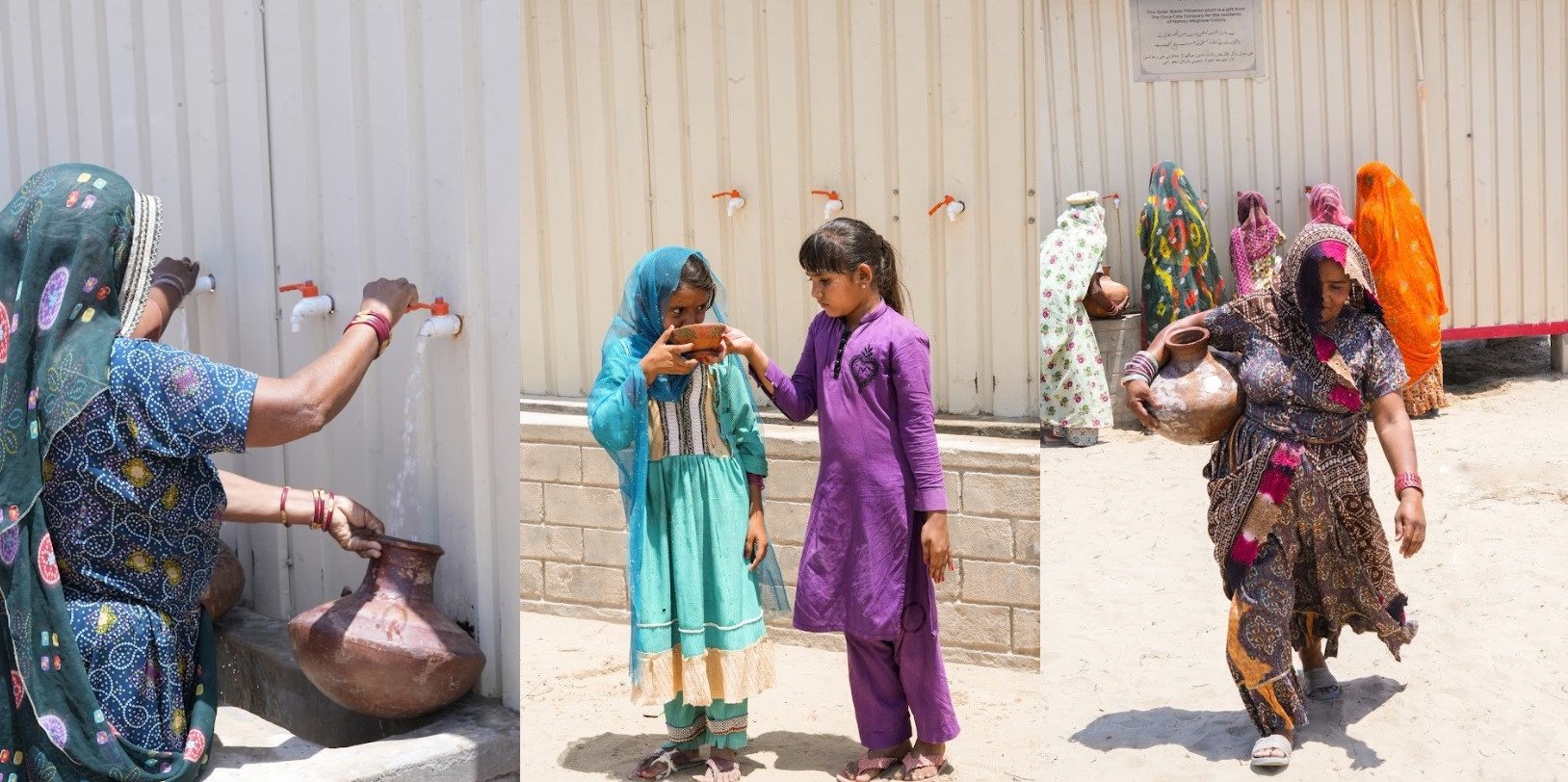
Meghwar, a parched village
Meghwar village is home to the Hindu Meghwars, who are considered to be one of the indigenous communities of the over-5,000-years-old Indus Valley civilisation. The village is located on the southern outskirt of Umerkot district.
The Thar desert, which forms a natural boundary with neighbouring India, spans a region of 200,000 km, and has a population of 1.5 million, making it one of the world's most densely populated deserts. The World Food Programme ranks it as the most food-insecure region in the country.
The desert's annual rainfall is just 250mm, making life extremely challenging when summer temperatures relentlessly soar to 50°C.
While the Tharis have been able to struggle through previous droughts, each year makes the situation more desperate and difficult as many of their traditional sources of water have dried up.
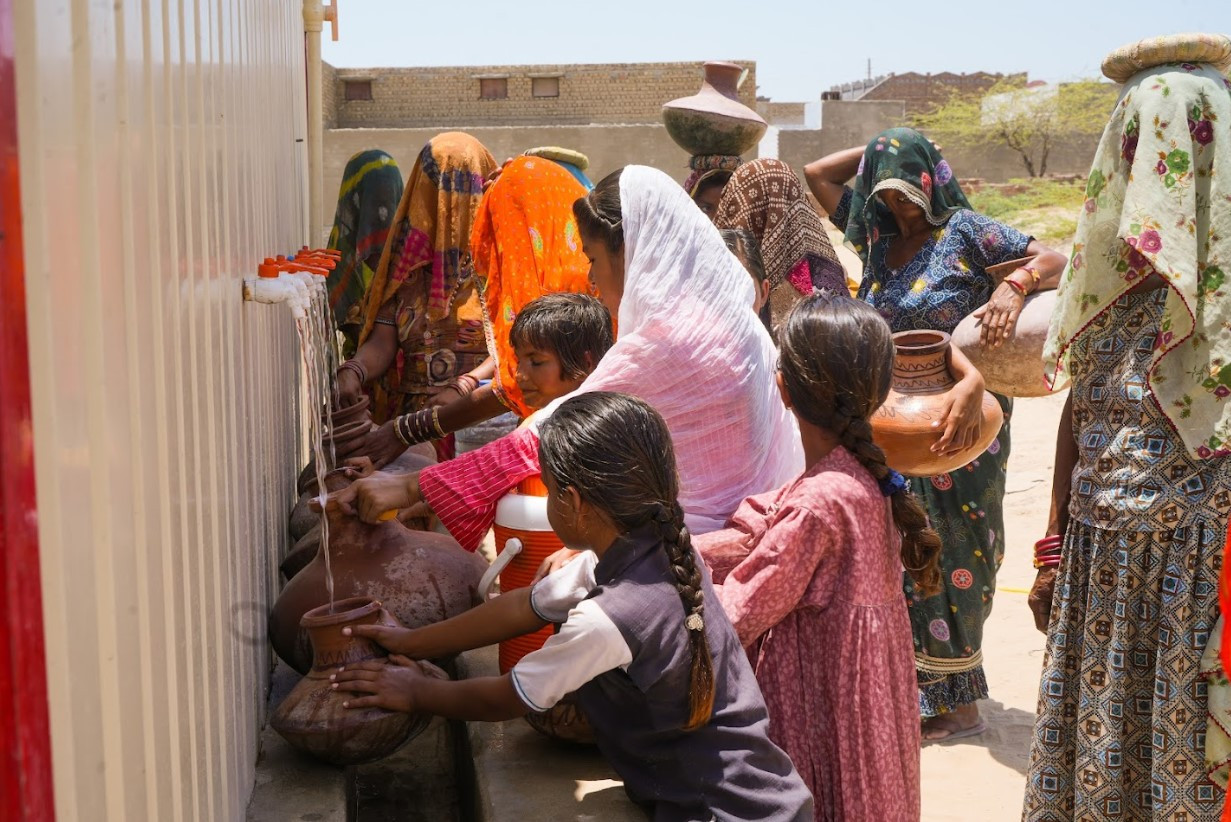
Water, a daily battle
"Fetching a few pots of water after covering an exhausting two-hour distance especially in the summer is quite challenging,” says Savita, a mother of five. “I used to do that every day, because you need more water in the heat, and we can only carry enough for one day at a time."
Her trip to get water in this far-flung village is a balancing act, grabbing one pot in each arm, and placing a couple on her head, amid swirling winds and sand.
Once she has fetched the water, Savita settles down to prepare food for her husband and then rushes over with her husband’s mid-day meal to a nearby mine where he works.
Parmeeshi who is Savita’s neighbour and accompanies her on the water-fetching trip has a similar ordeal to share. “Fetching water is not a daily challenge for Thari women, it's a battle," she says. “It's relatively easier in winters to trek this distance but in summers it's unbearable. However, for many years, we have had no choice.”
Parmeeshi is only 30, but her wrinkled skin — a result of the region's merciless weather conditions — makes her look older.
"Thank God, this huge problem has been resolved after setting up of a water plant. Now we don't have to take such a long exhausting walk," she says with a huge smile on her face.
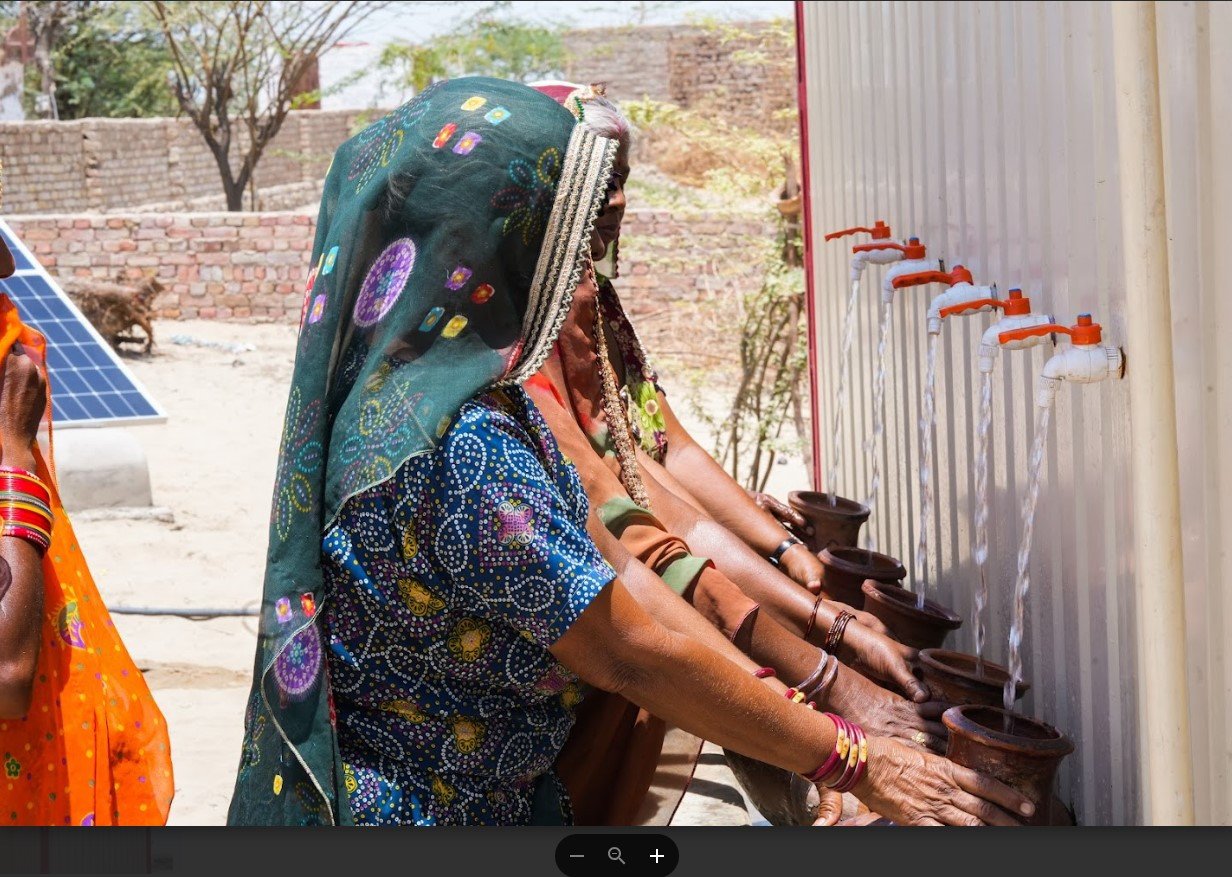
Relief at last
Recently, with the establishment of a state-of-the-art water filtration plant in her village, Savita no longer has to go through this arduous exercise.
The solar-powered plant has a capacity to disburse 1,000 litres of clean water per hour, benefitting over 8,000 inhabitants of this run-down locality, even by the standard of impoverished Thar desert.
To ensure sustainability, the new plant has been installed with solar, GPS system and flowmeters as the village has no electricity.
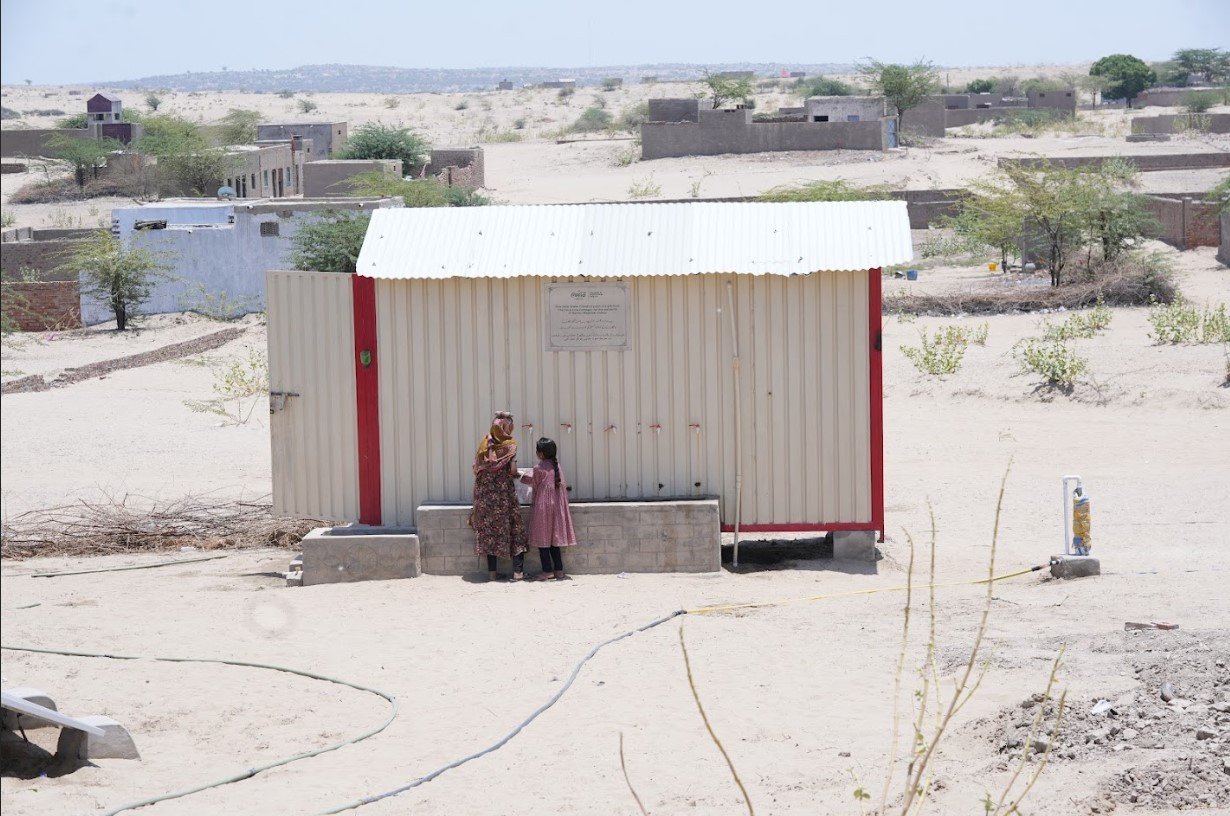
Song, singer, serendipity
Interestingly, behind this development is a song, about a 14th century, folk tale from Sindh, which occupies a major chunk of the Thar desert.
Produced by Coke Studio, the melodic and rhythmic lyrics of Sindhi smash hit “Aayi Aayi” celebrates empowerment, resilience, and victory. Featuring powerful vocals by Noman Ali Rajper, Babar Mangi, Marvi, and Saiban and music arrangement and production by Xulfi and Abdullah Siddiqui. The fusion of traditional instruments such as charango, banjo, and cuatros with modern synth elements not only create a captivating sound but tell the centuries-old tales of courage and determination passed down from generation to generation across the sands of Tharparkar.
The song is about the story of Marvi, who resists the overtures of the powerful King Umar and the temptation to live in the palace as a queen. Instead, she preferred the simple rural environment amidst her own village folk and returned to her home village, Bhalwa, untouched by temptation or the king.

Marvi’s resistance and love for her homeland was immortalised in Shah Abdul Latif Bhitai's celebrated poetic compendium 'Shah jo Risalo' (a collection of his poems). Shah Latif also named one of the seven musical notes after Marvi, commonly known as ‘sur Marvi.’
In comes one of the singers of this song who not only bears the same name as the heroine of the folktale, but also belongs to Meghwar village.
“In addition to my fee, my only demand was water for my people,” says Marvi, dressed in traditional embroidered shalwar-kameez, and a matching dupatta covering her head. “Water is life and no one can understand these words more than us. “When they [the music company] asked me what could they do for my people in return? I asked straightaway if they could work out a solution to provide water to my people.”
All her life, Marvi had seen this struggle for water and didn’t know how to tackle it, but finally, she thought, this was her opportunity to let a change happen for her community.
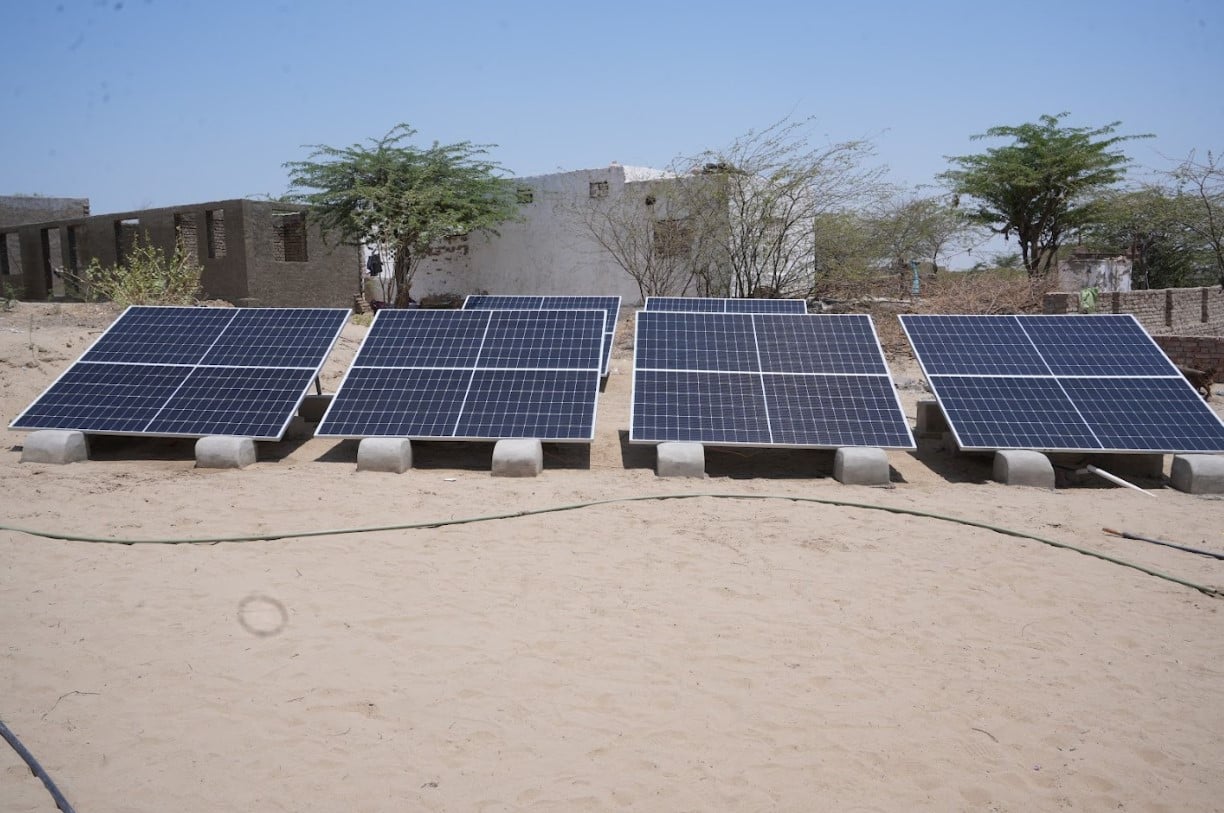
"Here I had a life-time chance to make that change and I went for it,” she says, beaming.
Marvi's niece and co-singer Saiban followed suit.
"After seeing how life became easier for Thari women in Meghwar village, I have placed the same demand for my village," says Saiban, with her signature smile that shot her to fame.
The company has approved another water filtration plant for her village located in Diplo town, some 130 km from Meghwar village.
"The song has brought money and fame to us,” she adds. “But the ease and convenience it has brought to our women is immeasurable.”
The story of four women, Savita, Parmeeshi, Marvi, and Sahiba is a testament to the enduring human spirit, women’s resilience and the power of music to bring about positive change. With access to clean water, the women of Meghwar village can now focus on building a better life for themselves and their families.
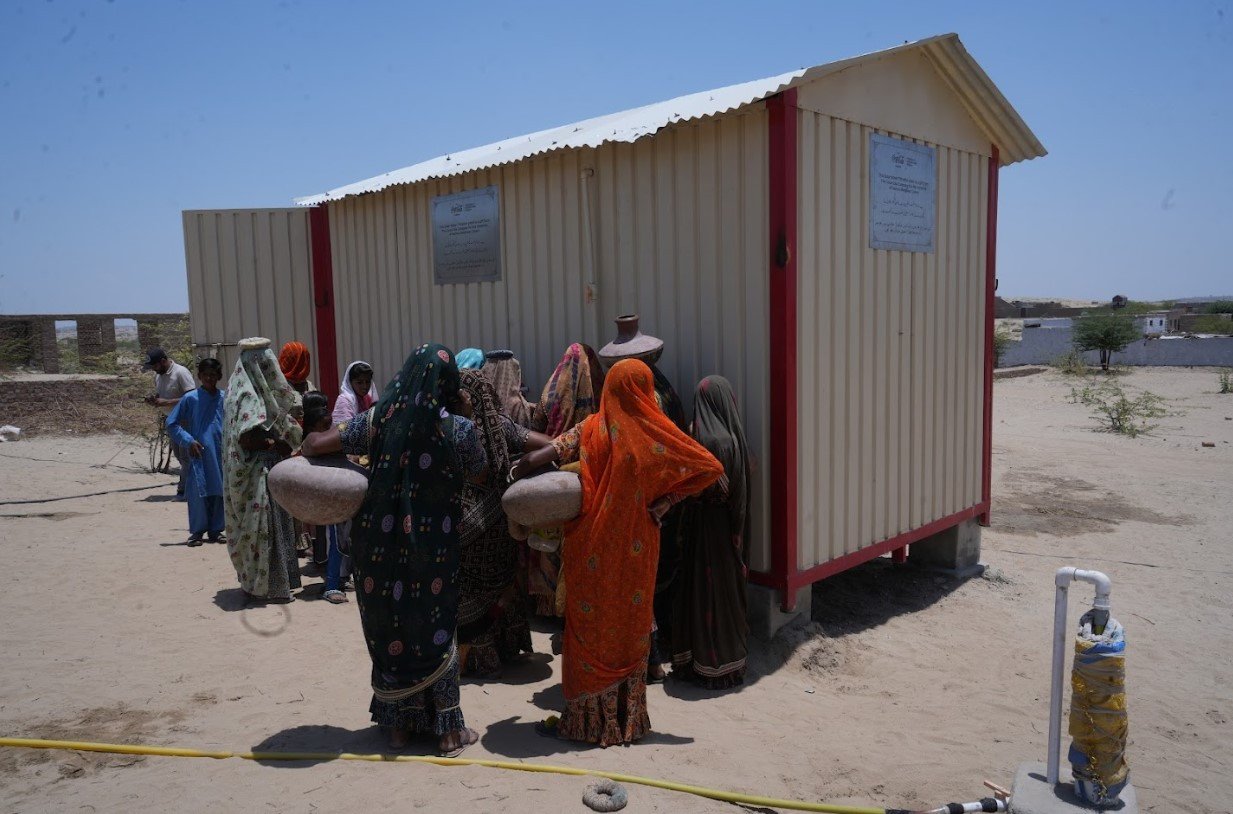
Postcard from Umerkot
With its rich history and culture, Umerkot is Pakistan 's largest Hindu-populated district, with a population of slightly above 50 percent.
Apart from Meghwar, other indigenous communities including, Kolhi, Malhi, Manganhar, Bheel, and Oadh live in the Thar desert.
Apart from being known for frequent famine spells and treacherous weather, Thar boasts a spectacular architectural treasure that authorities are finally trying to preserve.

In the midst of Umerkot city, stands a vast fort described as a transitional point of the Mughal dynasty that ruled India for over three centuries.
Once crumbling due to the ravages of time and years of neglect, Umerkot Fort is currently in a relatively presentable state following its restoration by the heritage authorities that began in 2016.
According to another account, Akbar was born in the middle of a jungle located some 5km from the fort, where a monument has been constructed.
Both Hindus and Muslims have conflicting claims to Umerkot or Amarkot fort and the city itself.
According to one account, Maharaja Amar Singh, who came to power in the middle of the 13th century, constructed the city and the fort. Some historians say King Umar, the founder of the Soomro dynasty, built the fort in the middle of the 11th century.

No matter who built the fort, visitors recall the tale of Marvi, who some believe was incarcerated in the fort for refusing the king’s proposal.
Located some 6km from Umerkot, the Shiv temple is one of the oldest and revered temples for Hindus living in Sindh, where Shiv or Shiva, one of the main deities of Hinduism, is worshipped as the supreme god.
The devotees, who converge from across the province, many of them barefoot as a mark of respect, pass through Muslim villages, where they are served drinks and meals.
Right behind the Shiv temple stands a recently constructed Durga or mother goddess, associated with protection, strength, motherhood, destruction, and wars.
Akbar 's monument, a modern brick-built small-domed pavilion situated on a small piece of land on the eastern outskirt of Umerkot, is erected to honour the Mughal emperor who ruled India for 49 years.
Encompassed by vegetation, which is the result of recent rains on the one side and Neem and Sidr [jujube] trees on the other, the doorless pavilion is built with baked red bricks. The dome has faded slightly due to harsh weather conditions.
Mian Aamir is a freelance journalist
All facts and information are the sole responsibility of the writer
